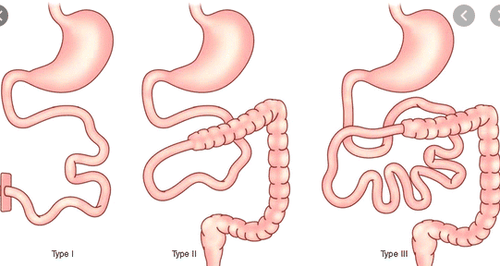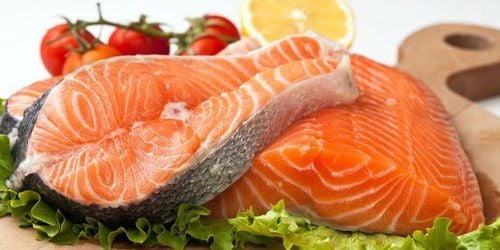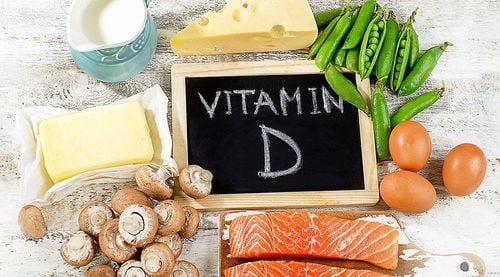This is an automatically translated article.
Breakfast is considered the most important meal of the day. Moreover, people who lose weight will also be very interested in this meal more. Breakfast with salmon salad and soba noodles is perfect for everyone. Because this dish not only provides many necessary nutrients for the body, but it is also a healthy meal that is good for health.1. Some information about salmon
Salmon is a commonly consumed fish praised for its high protein content and omega-3 fatty acids. Many studies have suggested that increasing intake of fatty fish such as salmon reduces the risk of obesity, diabetes and heart disease. Eating salmon also helps maintain healthy cholesterol levels.Furthermore, Salmon is a great substitute for protein sources like chicken or beef. Salmon provides ample protein but less saturated fat, making salmon an ideal source of protein for maintaining weight loss or a healthy body mass index (BMI).
In addition, salmon also offers a lot of health benefits such as:
Good for heart health: The link between omega-3 fatty acids and cardiovascular disease (CVD) has proven that the This fatty acid is linked to heart health and improves heart health. Thyroid disease: People with selenium-deficient thyroid disease will see significant benefits when increasing their selenium intake, including weight loss and reduced risk factors for cardiovascular disease and diabetes. Salmon is known as a good source of selenium. Mental benefits: Nutrients found in fish have been linked to a reduced risk of emotional disorders, such as depression. Unsaturated fatty acids with many double bonds have also been shown to be associated with a reduced risk of psychosis, cognitive decline, dementia, and hyperactivity disorders, such as hyperactivity disorder. attention deficit hyperactivity disorder (ADHD).
2. Some information about soba noodles
Soba noodles are popular in Japanese cuisine. They look a lot like spaghetti. They're not trendy in the United States, but people are catching up as they realize that buckwheat is useful for something other than making pancakes. Authentic soba noodles are made from 100% buckwheat flour. Some brands add another type of flour such as wheat or white flour.Buckwheat is not a real grain. Cereal grains come from the seeds of grasses, such as wheat. Pseudocereals come from the seeds of grasses that are not grasses, but look like cereal grains.
To get maximum nutrition from soba noodles, look for brands made with 100% buckwheat. Buckwheat has a number of health benefits, including the following:
Good Source of Manganese: One cup of soba noodles has 0.4 mg of the mineral source of manganese. This is 21% of the daily recommended value. Manganese is important for bone health, glucose metabolism, and wound healing. Food sources of manganese also support your nervous system. Research shows that manganese deficiency may play a role in osteoporosis, diabetes, and epilepsy. Soba noodles contain small amounts of other important minerals, including: Zinc, magnesium, potassium, iron Good source of Thiamine: Thiamin, also known as vitamin B1, is necessary for energy metabolism, growth and function healthy cell function. Thiamine is a major nutrient depleted during alcohol intake and metabolism. Thiamine deficiency can cause cardiovascular problems such as an enlarged heart, muscle weakness, confusion, and memory loss. One study carried out and found that thiamin deficiency may play a role in the development of Alzheimer's disease. High in protein: One cup of cooked soba noodles contains 6 grams of protein. Protein is important for growing, maintaining, and repairing cells throughout your body. Protein helps build muscle, including your heart muscle. Protein also makes hemoglobin and helps keep your immune system healthy. High in soluble fiber: Soba noodles are high in soluble fiber. Soluble fiber can help remove belly fat from the body. A 2009 study found that participants who consumed the most soluble fiber had less visceral (belly) fat. Supports heart health: Buckwheat may support heart health by lowering cholesterol and blood pressure. The ingredients of this food are also believed to have anti-inflammatory effects in your body. The flavonoid content of buckwheat is thought to be partly responsible. Flavonoids are plant compounds that support metabolic and cardiovascular function by reducing cell damage.
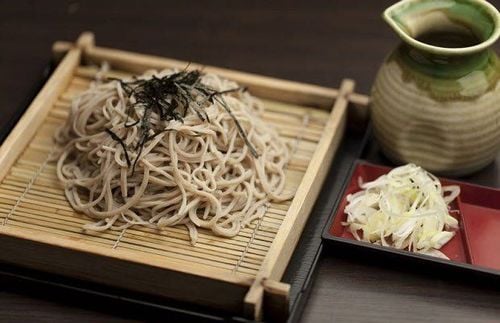
Kiều mạch trong mì soba có thể hỗ trợ sức khỏe tim mạch
3. Salmon salad and soba noodles
Ingredients 180g soba noodles 1 tablespoon sesame oil 4 salmon fillets (80-120g each) 1/4 purple onion (finely chopped) 1 carrot (grated) 1 small Lebanese cucumber (halved, cut diagonally sliced) 1 red bell pepper (thinly sliced) 3 cups rocket (approximately chopped) 1/4 cup peas (pumpkin seeds) 4 tablespoons balsamic vinegar 3 tablespoons rice wine vinegar 2 tablespoons soy sauce Instructions Boil noodles for 3-5 minutes or until cooked through. Drain the water and pour cold water into the pot. Set aside for noodles to drain.Heat a pan with half of the sesame oil over medium heat and put the salmon fillet skin down. Cook salmon fillet for 3-5 minutes on skin, then flip to cook for 2 more minutes and set aside and then continue with salad prep steps.
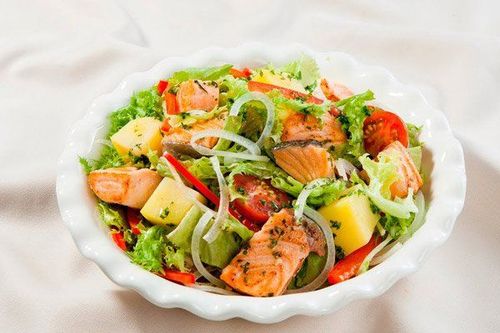
Bạn có thể thêm bơ vào salad cá hồi để tăng dưỡng chất trong món ăn
Pour the vinegar, rest of the sesame oil and soy sauce over the salad and combine well.
Drain the noodles. Squeeze more kumquats into the salad and then mix well.
To use salmon salad effectively as a healthy breakfast, divide the pasta salad between bowls and place the salmon on top.
Notes
Salmon is a rich source of omega-3 fatty acids that help protect against high cholesterol, high blood pressure and inflammation.
Add 1/2 sliced avocado to this salmon salad for more healthy fats.
Please regularly follow Vinmec website (www.vinmec.com) to update useful health care information and leave information when you need medical advice and support!
Please dial HOTLINE for more information or register for an appointment HERE. Download MyVinmec app to make appointments faster and to manage your bookings easily.
Reference source: nutritionaustralia.org



